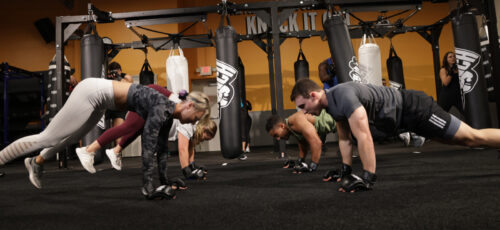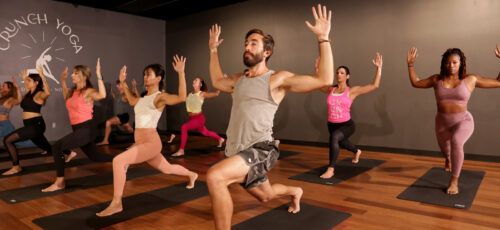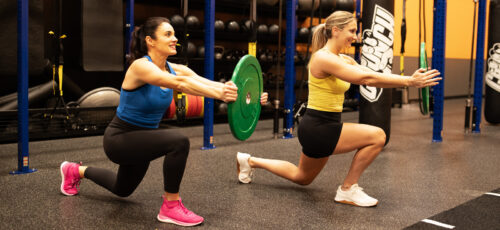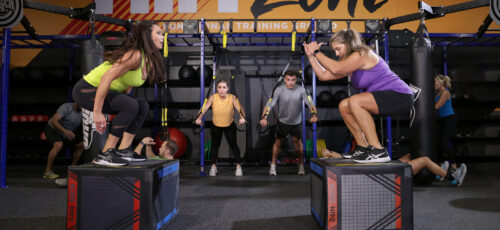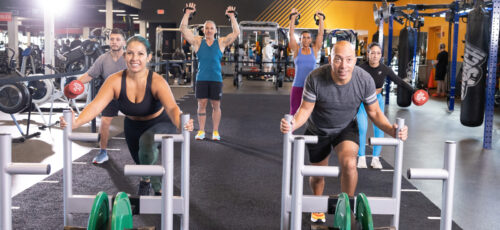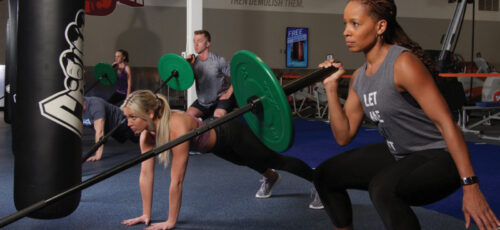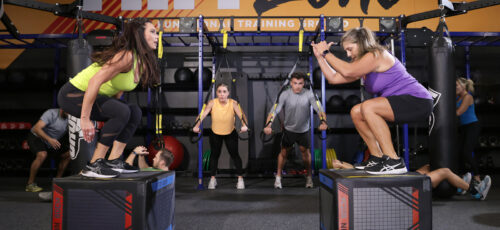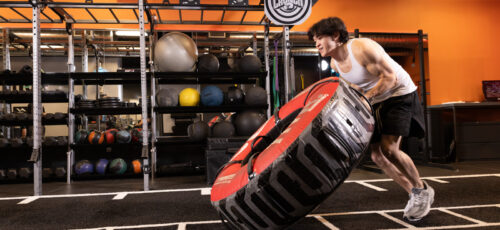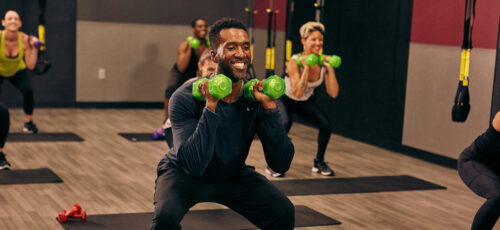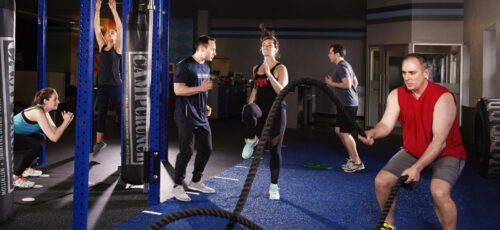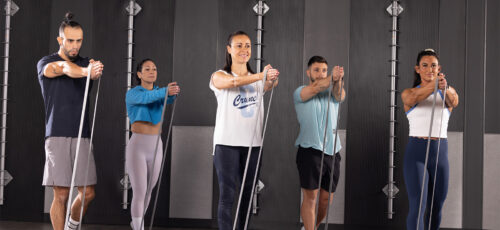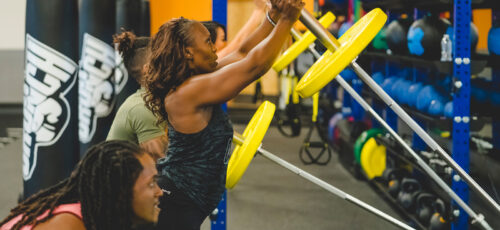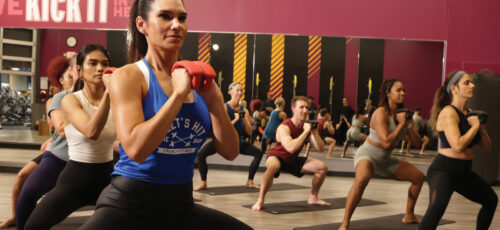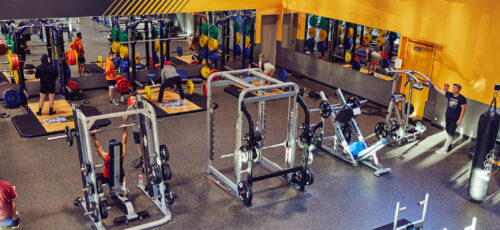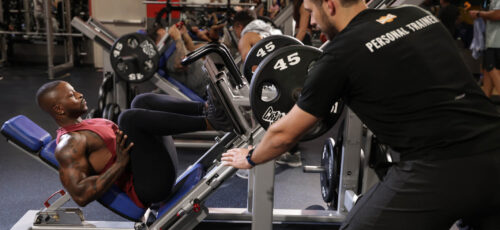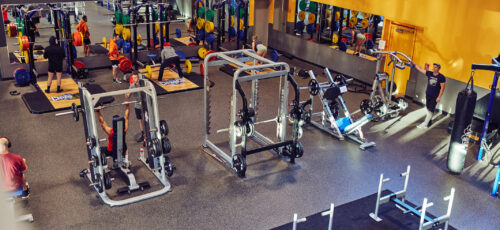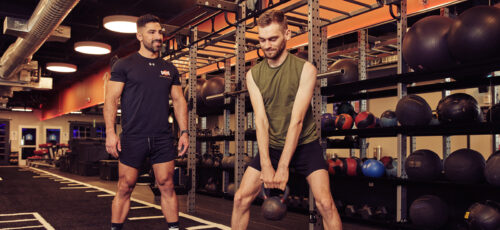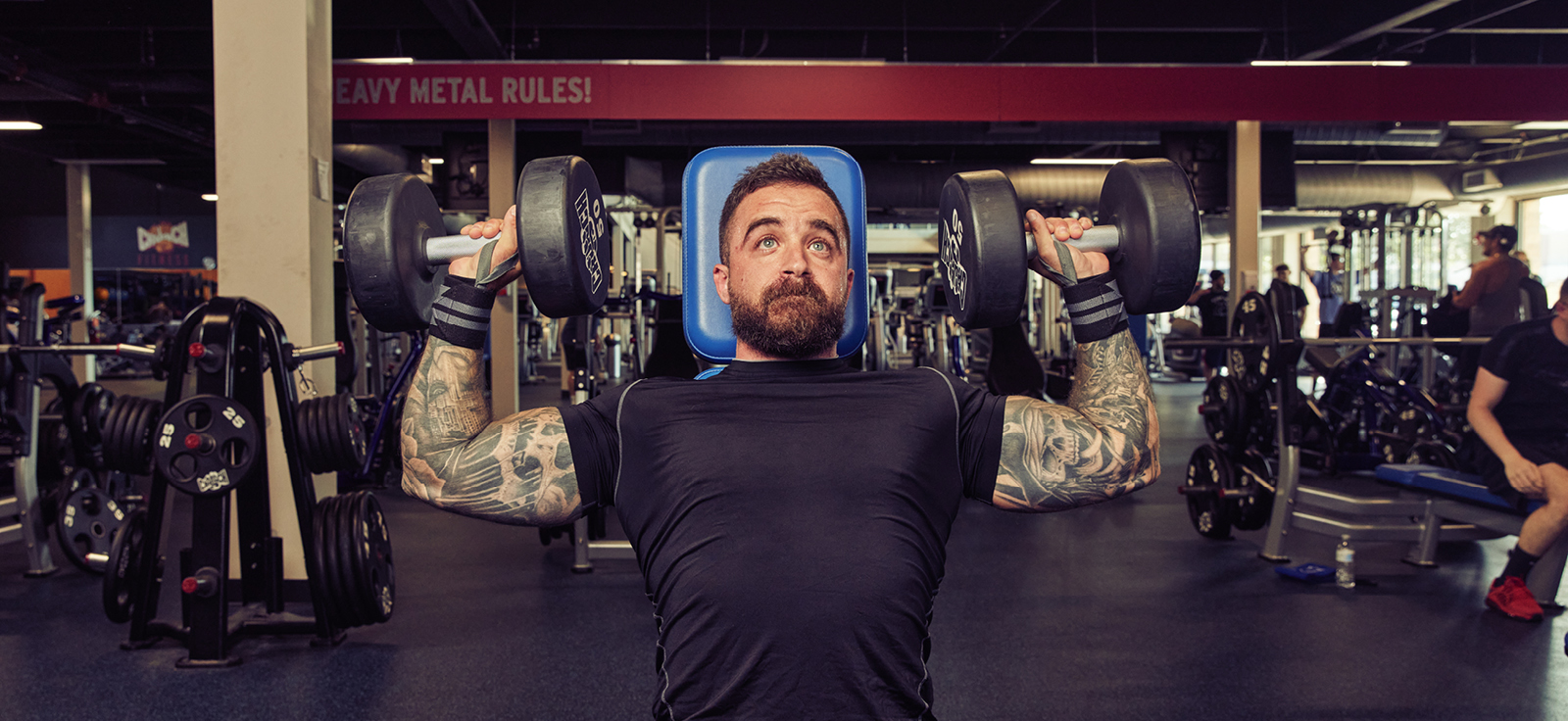
Turns Out the Benefits of Lifting Weights Far Exceeds Muscle Development
If there’s one thing you can do to improve your fitness today, it’s to lift weights. This exercise involves using one or more muscle groups and some machines or free weights to perform a specific movement. When lifting weights, you’re placing stress on your muscles, which causes them to adapt and strengthen. Not to mention, it leads to a diverse array of other advantages.
It’s More than Just Lifting Heavy Things
As mentioned above, weight lifting is more than lifting heavy things. It takes focus, concentration, and determination. It builds character and friendship and can result in increased mental clarity and reduced stress in and out of the gym. Weight lifting can improve our cardiovascular health, reduce our risk of osteoporosis, and even serve as a drug-free mood enhancer.
A British Journal of Sports Medicine (BJSM) study found that individuals participating in muscle-strengthening workouts are 40 percent less likely to die prematurely than their non-weight-lifting counterparts. Even better, it only requires one to two weekly training sessions to see the lifelong benefits. There are many reasons why this is the case—improved cardiovascular, skeletal, and mental health.
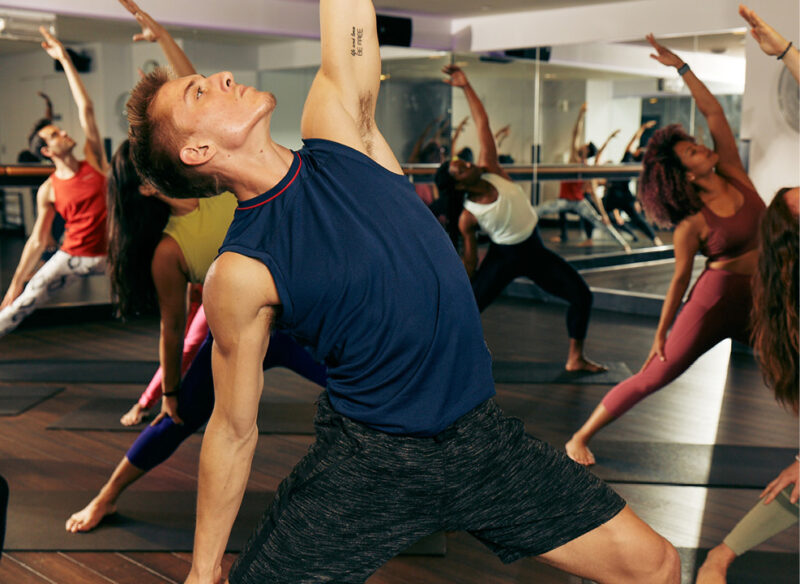
Heart-Healthy Exercises
Heart disease is the number one cause of death for adults in the United States. According to the Centers for Disease Control and Prevention (CDC), about one in five deaths is caused by cardiovascular disease. While there are many risk factors for this condition, including uncontrollable ones such as age and genetics, you can also take several actions to reduce your risk. Eating sufficient nutrients and minerals, avoiding tobacco products, and constantly exercising are some ways to minimize risk. Exercise helps to lower your blood pressure, increase your levels of good cholesterol, help you maintain an optimal weight, and improve your blood flow and total body circulation.
Strength training exercises help to get your heart pumping. Some of these exercises include lifting weights or body-weight exercises. These exercises also increase lean muscle mass, causing your body to burn more calories at rest, which can help you reduce fat percentage. And it should be no surprise that all of this is good for your heart. One study by the National Library of Medicine (NLH) found that muscle-strengthening workouts can reduce the risk of a heart attack or stroke by up to 70 percent.
Strengthen Your Bones
Osteopenia is a bone disease in which the bones lose mineral content, such as calcium, and become weaker and more prone to fracture. Osteoporosis is a more severe bone disease in which the bones become even more porous and lose bone faster than the individual can grow new bone, which makes fractures quite common. These bone conditions are most common in older adults and post-menopausal women. That said, they can affect anyone.
Studies show that about 90 percent of adult bone mass is gained during the first 20 years of life, so ensuring our youth have adequate nutrition and exercise is essential. When we don’t get the necessary vitamins and minerals our bodies need, it can result in conditions such as osteopenia.
While medications are available to help reduce the risk of fracture and increase bone health, a more natural alternative is to participate in weight-bearing exercises to strengthen bones. In short, weight lifting can benefit your skeletal system, as you can increase bone density and build a stronger foundation for the future.
Boost Your Mood
For many individuals, “pumping iron” has physical and emotional benefits. Weightlifting brings a sense of constant progression and achievement, which can boost our moods. Include your everyday Joe and those suffering from mental health conditions, such as depression.
Another reason lifting weights boosts your mood is exercise increases confidence. It evokes a sense of pride in the participant’s mind. While studies are ongoing, early results show that resistance training increases muscle mass and can induce the release of endorphins and a protein in the brain that triggers the growth of new brain cells and improves communication between cells.
Exercises that Strengthen Your Mind
A study published in a 202o issue of NeuroImage: Clinical discussed how strength training has many health benefits. For one, it could help prevent the shrinking of the hippocampus in our brains as we age. Weight training involves a significant amount of focus and precise form, which keeps us engaged and sharp and our neural circuits firing. In short, lifting weights strengthens our minds.

Benefits of Lifting Weights
The previous section discussed many high-level benefits of strength training, but is that all? The answer is no. In this section, we’ll discuss more specific benefits of lifting weights, from improved coordination to a reduced risk of injury and increased self-esteem and overall quality of life. After all, while it’s critical to plan for the future, seeing an improvement in your daily life is also beneficial. Thankfully, strength training is a crucial contributor to this. Let’s dive in.
Improved Coordination
Strength training is as much a workout for the central nervous system (CNS) as it is for your muscles. As you strengthen new muscle groups, the CNS enhances its ability to coordinate movement and becomes more efficient. An excellent example is comparing the elderly population to the youth population. Geriatric individuals naturally have less muscle mass, which increases the risk of falls and injury. In contrast, pediatric individuals have firm muscles that better support their frame and functional movements.
Reduced Risk of Injury
As mentioned in the previous section, older individuals are at greater risk for injury due to reduced muscle mass and less coordinated CNS. Individuals of all ages can benefit from strength training because it increases their ability to control their bodies and move with grace and intent. By having better-calculated movements and more body control, the risk of injury decreases dramatically. Strength training also improves the strength of the tendons, ligaments, and bones. Stronger tendons hold the body in proper alignment, which protects the bones and joints during movement or moments of impact.
Boost Your Self-Esteem & Quality of Life
Resistance training has many health benefits, including a boost to your self-esteem and overall perceived quality of life. Participating in physical activity allows us to burn off mental steam, calories, and pent-up frustration from our professional or educational careers. It allows us to focus our minds inward, maintain internal alignment, breathe deeply, and move in a carefully calculated manner.
Over time, as our lean body mass increases, our body fat decreases, and our muscle strength improves, we may also notice an increase in our confidence level. We continue to set goals and progress toward them. When we’re doing well physically, it’s often the case that we begin to notice improvements in our mental health, too. It all cumulates and results in a higher quality of life.
When we feel better about ourselves, we often put off more positive vibes, which can attract others to us. We may also build a fitness community of like-minded individuals, which furthers our ability to advance toward our goals. In this way, we become better connected to ourselves and those around us.

Improves Posture
By working out with weights and building muscle, we are also aiding our back and spine in supporting our weight with our muscles’ assistance, making it easier to maintain good posture throughout the day and avoid future back problems.
Joint Health
Well-designed weight-lifting routines and resistance exercises, in general, are effective methods for enhancing joint health. They provide your bones with extra protection and reduce the risk of bone conditions such as osteoporosis.
Hormonal Balance
An accurate and consistent resistance training exercise routine can also help you balance the hormonal levels in your body. Hormones like testosterone and growth hormones help our bodies maintain healthy muscles, bones, and tissues. This maintenance allows for efficient training sessions and enables you to progress toward your fitness goals.
Specific Areas to Target
In the final section, let’s get down to the nitty-gritty of specific areas to target when doing resistance training. For beginners, it’s common to target the entire body, starting with the fundamentals of weight lifting before advancing into the more niche areas. Those participating in resistance exercises for some time must adjust their routine to avoid hitting a maintenance level without progression unless that’s your target. Weight training has three specific areas depending on your fitness goals: endurance, strength, and power. Let’s explore each one in further detail.
Endurance
Increased strength endurance means that we’re interested in being as strong as possible for as long as possible. Contrary to popular belief, it doesn’t mean we must lift low weights at high repetitions. Instead, you need a program that uses heavy weight, short rest periods, and utilizes volume to increase strength endurance. The idea behind short rest periods is to train your muscles to exert maximum force when not fully rested and oxygen-depleted. By doing so, it will train your body to recover faster. You also want to increase volume as you prepare your muscles to endure for more extended periods. Add in some heavy weights, and you’ve mastered the recipe for strength endurance training.

Strength
Strength training is often carefully calculated. It requires you to develop large, fast-twitch muscle fibers that require strong nerve impulses. In layperson’s terms, you must increase the amount of weight you’re lifting, reduce the number of repetitions, and push your muscles to their absolute limits; however, this doesn’t mean that you are lifting to exhaustion. You want to aim to have one or two repetitions left in the tank. As part of your training, you’ll also want to increase your rest periods, as your muscles need additional time to re-oxygenate for your next set.
Power
The third target area of resistance training we’ll cover is power training. The results can be noticeable as strength training refers to the body’s ability to overcome resistance. In contrast, power training refers to the body’s ability to overcome resistance in the shortest period. You’ll want to move quickly and with control to improve power. The resistance is often lower with more rapid movement. An excellent example of this is raising the weight of a deadlift fast, then lowering it slowly, focusing on control and proper breathing. The same goes for squats, lunges, bicep curls, bench presses, etc.
Build Muscle
Resistance training and weight lifting can suit any fitness level, constituting a versatile workout methodology. We highly encourage you to incorporate strength training exercises into your fitness routine.
If there’s one thing you can do to enhance your fitness today, it’s lifting weights. This exercise involves engaging one or more muscle groups using machines or free weights to perform specific movements. Over time, it will not only improve your physical fitness but also benefit your mental health. Always remember that it needs to be enjoyable, challenge your limits, and foster inclusivity.
Crunch’s trainers are an excellent resource for helping you accomplish your goals. They promote an environment built for all types of individuals and help you crush your goals. Find a Crunch gym near you to try our free trial membership, or join Crunch now.
FAQ
Is It Possible to Regain Lost Muscle If I Stop Training?
Yes, when we resume our training routines, our muscles already understand the type of workout they were previously performing. Making it easier for our bodies to recover the muscle mass we lost when we weren’t training.
Is the Muscle Growth Process Immediate?
Just like any other process, changes in muscle growth may take some time to become noticeable. However, weight training remains an effective method for burning calories, targeting different muscle groups, and aiding in fat loss.
Crunch promotes a culture of positivity, inclusivity, and fun with no judgments by providing an environment for all individuals regardless of their health and fitness goals. Find a Crunch gym near you to try our free trial membership, or join Crunch now.
Participating in physical activity allows us to burn off mental steam, calories, and pent-up frustration from our professional or educational careers.
Benefits of Lifting Weights
The previous section discussed many high-level benefits of strength training, but is that all? The answer is no. In this section, we’ll discuss more specific benefits of lifting weights, from improved coordination to a reduced risk of injury and increased self-esteem and overall quality of life. After all, while it’s critical to plan for the future, it’s also beneficial to see an improvement in your daily life now. Thankfully, strength training is a key contributor to this. Let’s dive in.
Improved Coordination
Strength training is as much of a workout for the central nervous system (CNS) as it is for your muscles. As you strengthen new muscle groups, the CNS enhances its ability to coordinate movement and becomes more efficient. An excellent example of this is seen when we compare the elderly population to the youth population. Geriatric individuals naturally have less muscle mass, which increases the risk of falls and injury. In contrast, pediatric individuals have firm muscles that can better support their frame and functional movements.
Reduced Risk of Injury
As mentioned in the previous section, older individuals are at greater risk for injury. This is partly due to their reduced muscle mass and less coordinated CNS. Individuals of all ages can benefit from strength training because it increases their ability to control their bodies and move with grace and intent. By having better-calculated movements, and more body control, the risk of injury is dramatically reduced. Strength training also improves the strength of the tendons, ligaments, and bones. Stronger tendons hold the body in proper alignment, which protects the bones and joints during movement or moments of impact.
Boost Your Self-Esteem & Quality of Life
Resistance training has many health benefits, including a boost to your self-esteem and overall perceived quality of life. Participating in physical activity allows us to burn off mental steam, calories, and pent-up frustration from our professional or educational careers. It allows us to focus our minds inward, maintain internal alignment, breath deeply, and move in a carefully-calculated manner.
Over time, as our lean body mass increases, our body fat decreases, and our muscle strength improves, we may also notice an increase in our confidence level. We continue to set goals and progress toward them. When we’re doing well physically, it’s often the case that we begin to notice improvements in our mental health too. This all cumulates and results in a higher quality of life.
When we feel better about ourselves, we often put off more positive vibes, which can attract others to us. We may also begin to build a fitness community of like-minded individuals, which furthers our ability to advance toward our goals. In this way, we become better connected to ourselves and those around us.
Specific Areas to Target
In the final section, let’s get down to the nitty-gritty of specific areas to target when doing resistance training. For beginners, it’s common to target the entire body, starting with the fundamentals of weight lifting before advancing into the more niche areas. For those who have been participating in resistance exercises for some time, you must adjust your routine to avoid hitting a maintenance level without progression, unless that’s your target. There are three specific areas in weight training depending on your fitness goals, including endurance, strength, and power. Let’s explore each one in further detail.
Endurance
Increased strength endurance means that we’re interested in being as strong as possible for as long as possible. Contrary to popular belief, it doesn’t mean we must lift low weights at high repetitions. Instead, you need a program that uses heavy weight, short rest periods, and utilizes volume to increase strength endurance. The idea behind short rest periods is training your muscles to exert maximum force when not fully rested and oxygen-depleted. This will also train your body to recover faster. You also want to increase volume as you prepare your muscles to endure for more extended periods. Add in some heavy weights, and you’ve mastered the recipe for strength-endurance training.
Strength
Strength training is often carefully calculated. It requires you to develop large, fast-twitch muscle fibers that require strong nerve impulses. In layperson’s terms, you must increase the amount of weight you’re lifting, reduce the number of repetitions, and push your muscles to their absolute limits. This doesn’t mean, however, that you are lifting to exhaustion. In fact, you want to aim to have one or two repetitions left in the tank. As part of your training, you’ll also want to increase your rest periods, as your muscles need additional time to re-oxygenate for your next set.
Power
The third target area of resistance training we’ll cover is power training. This is differentiated as strength training refers to the body’s ability to overcome resistance, while power training refers to the body’s ability to overcome resistance in the shortest period. You’ll want to move quickly and with control when seeking to improve power. The resistance is often lower with more rapid movement. An excellent example of this is raising the weight of a deadlift fast, then lowering it slowly, focusing on control and proper breathing. The same goes for squats, lunges, bicep curls, bench presses, etc.
If there’s one thing you can do to improve your fitness today, it’s lift weights. This exercise involves using one or more muscle groups and some machines or free weights to perform a specific movement. Over time, it will increase not only your physical fitness but your mental health, too. Always remember, it’s meant to be fun, push your limits, and promote inclusivity.
Not sure where to start? Contact us for more information on our fitness classes and personal training programs.
Crunch promotes a culture of positivity, inclusivity, and fun with no judgments by providing an environment for all individuals regardless of their health and fitness goals. Find a Crunch gym near you to try our free trial membership, or join Crunch now. We’re here for you – at the gym or at home. Access the best live & on-demand workouts anytime, anywhere with Crunch+. Ready to get sweaty? Try hundreds of workouts for free! Start your free trial now!











